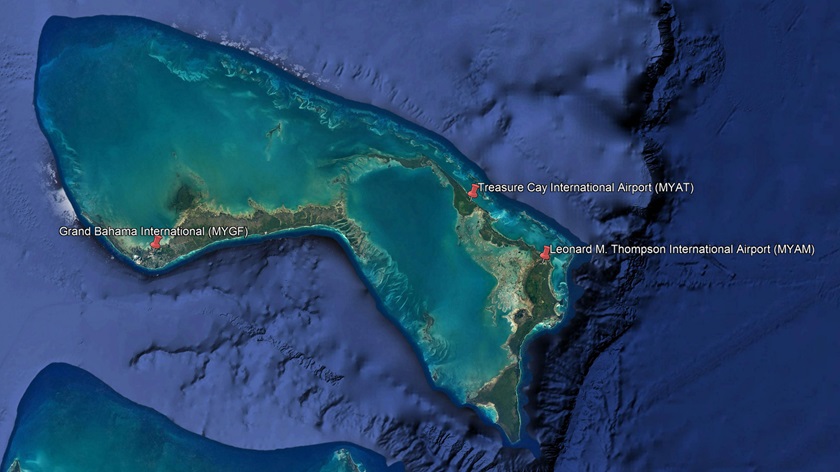Bahamian bottleneck slows relief effort
Air Force asks pilots for help
The airports and airspace around Grand Bahama Island and the Abaco Islands have become so congested with well-meaning relief flights after Hurricane Dorian that aviation authorities are pleading for pilots to follow procedures.
U.S. Air Force personnel alerted AOPA on Sept. 7 that three Bahamian airports are so congested by private flights that the resulting bottleneck is slowing the pace of delivering relief to those who desperately need it. An alarming number of arrivals have not followed prescribed procedures to obtain authorization.
The Abaco and Grand Bahama Islands bore the brunt of the storm’s wrath as it stalled on top of them starting on Sept. 1 and pummeled them for more than 36 hours with 185 mph winds that caused unprecedented and catastrophic damage. AOPA’s senior leaders traveled to Florida to coordinate with Bahamian officials soon after the storm finally moved north, and various general aviation organizations began flying in food, water, and other critically needed items almost as soon as weather conditions allowed, but the combination of devastated infrastructure and the limited capacity to service aircraft on the ground reinforced AOPA’s messaging to pilots: Don’t go; but donate to relief organizations instead.
The Bahamas Civil Aviation Authority advised pilots to avoid operating in the Bahamas Flight Information Region (FIR) as much as possible, and established a temporary flight restriction over Grand Bahama International Airport. On Sept. 6, the FAA began managing low-altitude airspace in the affected areas, using an AWACS airplane orbiting over the area to assist with air traffic management. The FAA daily releases revised preferred routings from coastal Florida airports to the affected Bahamian airports.
U.S. Air Force personnel told AOPA Sept. 7 that Bahamian officials were still working to establish flight authorization procedures that could manage the flow of traffic, both in the air and on the ground.
For anyone not already actively involved in a coordinated and sanctioned effort, steering well clear of the affected islands was likely to bring more relief than flying to them.
GA disaster relief group Operation Airdrop announced Sept. 6 in a Facebook post that the organization was standing down Bahamas relief operations to avoid making the local problems worse, in part because cruise ships had taken over much of the important work of bringing supplies in and bringing people out of the devastated area.
“The passion general aviation pilots have for assisting is remarkable,” said AOPA President Mark Baker. “Having to follow procedures and live with airspace restrictions can be frustrating when the need is so great. However, in this case, the responsible thing to do is to work with the authorities and the procedures that are being established—and updated daily as conditions change—so that we can be as effective a possible.”
The FAA, meanwhile, has not been actively pursuing pilots who did not abide by the TFR. However, AOPA has heard reports that the agency is losing patience and enforcement actions may be forthcoming. Pilots flying in to Bahamian airspace may be queried about their authority to be there, according to Air Force officials. The pilot of any aircraft desiring to fly into Grand Bahama or Treasure Cay must call the Bahamian National Emergency Management Agency (NEMA) at 242-322-6081 or 242-332-6085 for entry procedures.




